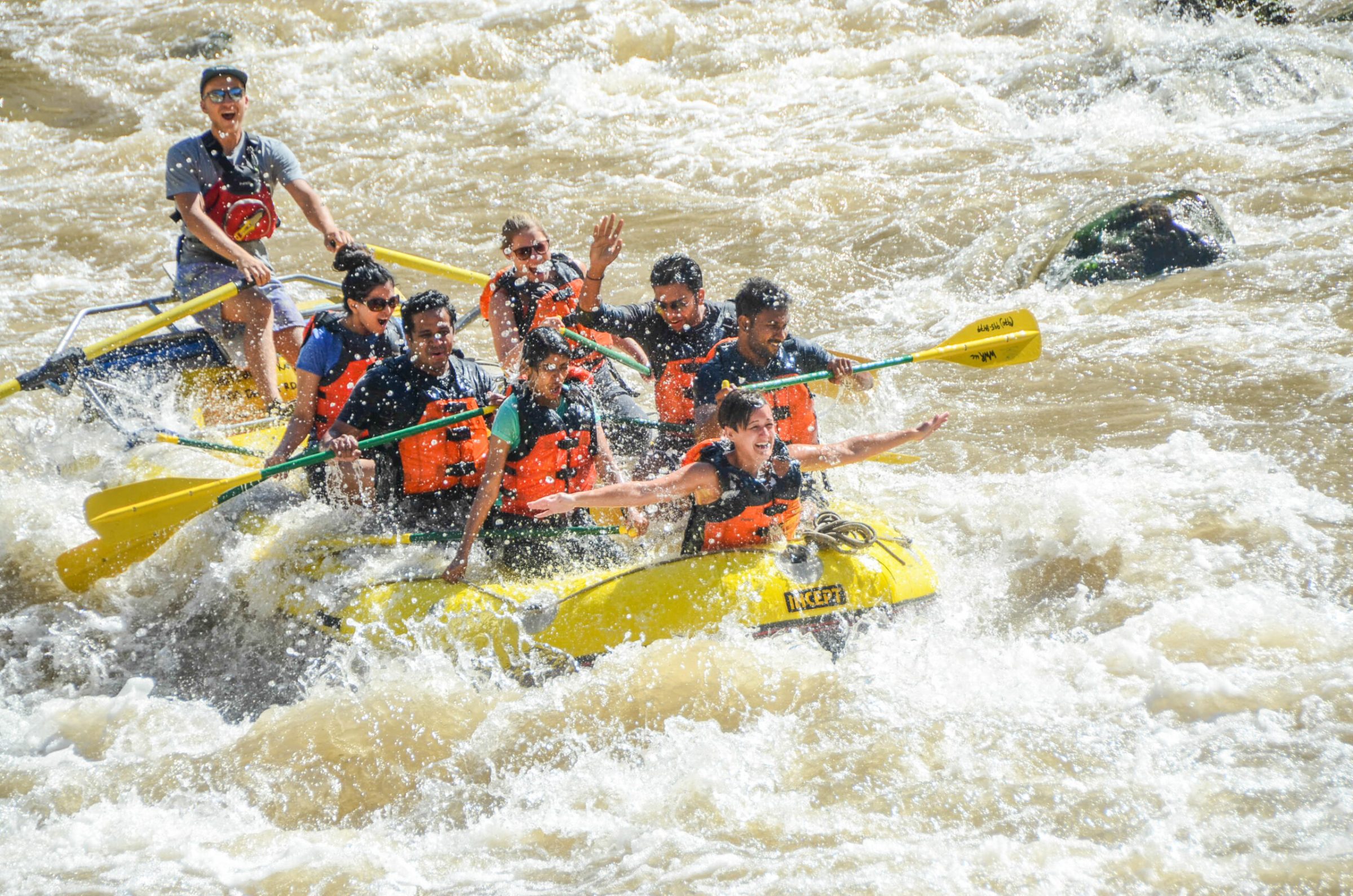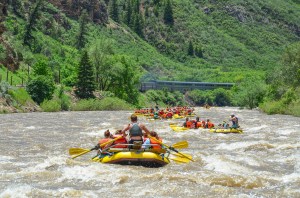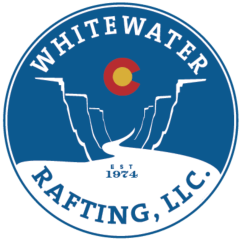Whitewater Rafting Ratings and Classification

Whitewater rafting has a rating and classification system to measure the difficulty of rivers. The International River Difficulty Scale, developed by the American Whitewater Association, is the most common rating system and is used routinely in Colorado. The scale uses a Class I through Class VI rating system to rank raftable rivers. Rafting in Colorado offers plenty of runs in each class – including lots of rafting suitable for beginners, children, older adults, and novices. In this blog post, we’ll talk about the different ratings and classifications and provide you with a few other tips that can improve your Colorado rafting experience.
The rating given to a river or rapid is a snapshot. It is based on the informed opinion of those who have been there, often over several seasons and on many different lines. However, it doesn’t necessarily capture the roughness of a river or the rapids of all water currents in all seasons. Under normal circumstances, it can be Class IV, but it can become Class V during the spring flood season.
The remoteness of a site can significantly affect the difficulty level. If traveling along a road, a route that is Class III+ is likely to qualify as Class IV or Class IV+ if it is in a remote area and away from outside assistance. Debris, such as logs and other obstacles, can add to the difficulty.
Rating systems are invaluable in giving whitewater rafters a guide of what to expect when navigating a river system or rapids. There’s no surefire way to tell if you can handle a particular river or rapid. You must use good judgment, consult several sources, and talk with those in a similar situation.

River Classes I-VI
There are more than a dozen commercially rafted rivers in Colorado, many of which are rated Class II to Class IV. Some more treacherous routes have earned a Class V designation. But what can you expect at each class level? Below, we break down each class based on the International River Difficulty Scale:
Class I: Easy
Class I rapids are small, fun waves in fast-moving water. This type of water is usually what people traveling down the river in tubes are seeking. Think of fast-flowing water ripples and small waves. The secondary rapids are more exciting as they require some maneuverability but are still considered suitable for rafters of all ages and experience levels. A few obstacles are apparent and easily overlooked, requiring little training. The risk to swimmers is low. Self-rescue is easy.
Class II: Beginner
Think straightforward rapids with wide, clear passages. Occasional maneuvering may be required, but experienced paddlers easily overlook rocks and moderate-sized waves. Swimmers are rarely injured and rarely need group help, although helpful. Rapids at the higher end of this difficulty scale are called “Class II+.”
With Class I and Class II rapids, you’ll enjoy a calm, relaxing stretch between the more exciting Class II+ rapids. During these moments, you can enjoy the pristine wilderness and spot some of Colorado’s famous wildlife.
Class III: Intermediate
Class III whitewater requires a rafting guide – the fast current creates waves big enough to propel the raft and get your blood pumping. Rapids with moderate, unsteady waves are difficult to avoid and can drown open canoes. Often requires complex maneuvers in rapids and good raft control around narrow passages or ledges; large waves or screens may occur but are easily avoided. Especially in high-flow rivers, solid eddies and powerful flow effects can be found. Scouting is advisable for inexperienced parties. Swimming injuries are rare. Self-rescue is usually easy, but you may need group assistance to avoid prolonged swimming. Rapids at the upper and lower end of this range are designated “III+” and “III-,” respectively.
Class IV: Advanced
Class IV rapids have small vertical drops and obstacles that require a lot of stamina for paddling. These rapids are usually best suited to those who have rafted before, but that doesn’t necessarily rule out first-time adventurers.
Think intense, powerful, yet predictable rapids that require precise maneuvering of the raft in turbulent water. Depending on the nature of the river, there may be unavoidable large waves and holes or narrow passages requiring quick maneuvers under pressure. Kicking off the action, exploring rapids, or taking a break may require quick, sure spins. The risk of injury for swimmers is moderate to high, and water conditions can make self-rescue difficult. Rapids at the lower or upper end of this difficulty range are designated “IV-” and “IV+,” respectively.
If you’re in good shape and ready for a physical and mental challenge, you might be rafting Class IV rapids on your first river adventure. Remember to listen to your guides and follow their instructions to stay safe.
Class V: Expert
Class V rapids occur in turbulent water. To raft these technical rapids, you’ll need a lot of rafting experience and a severe challenge. These long, exciting, dangerous rapids require impeccable skills, physical fitness, and stamina. Even the most experienced rafters will find the Class V rapids challenging. You won’t be able to tackle these rapids without river experience. They require well-coordinated teamwork to maneuver safely.
Extremely long, violent rapids put paddlers at additional risk. Rapids can run great distances between pools and require a high fitness level. Existing eddies may be small, turbulent, or difficult to reach. Several of these factors can be combined at the high end of the scale. Scouting is recommended but can be difficult. Swimming is dangerous, and rescues are often tricky, even for experts. Highly reliable Eskimo reels, suitable equipment, experience, and professional rescue skills are essential.
Category VI: Extreme and Adventure Rapids
Class VI rapids are so powerful that most people never try them, especially rafts. These are the kinds of rapids you’ll often see in extreme kayaking videos and make most of us nervous just by looking at them. The consequences of a mistake are dire, and rescue is impossible.
